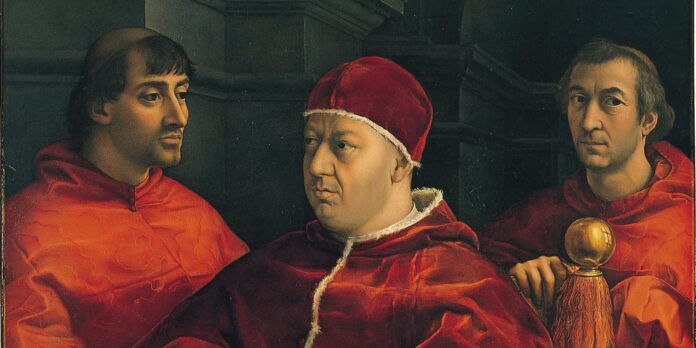The Medici bank once was Europe’s most powerful financial institution.
In 1397, Giovanni di Bicci de’ Medici started the bank in Florence on which the Medici fortune was built. At the time, Florence had emerged as an important center for banking (the city’s gold coin, the florin, became a standard currency across Europe in the 14th century). Under Giovanni’s son Cosimo, the Medici bank grew into the most powerful in Europe in the 15th century, with branches in Rome, Venice, Naples, Milan, London, Geneva and other locations. The Vatican was a major client, and the bank also was involved in the textile and alum trades. Cosimo used his wealth to influence Florentine politics, launching the Medici political dynasty. As an important patron of the arts, he helped put Florence at the center of the Renaissance. Following Cosimo’s death in 1464, the bank went into decline and by the end of the 15th century had shuttered most of its branches. The Medici dynasty continued, though, and family members served as dukes of Florence and grand dukes of Tuscany from the early 1530s to 1737.
Michelangelo lived with the family.
As a teenager Michelangelo was recommended for admission to a school for sculptors established by Lorenzo de’ Medici, one of the most prominent members of the dynasty (he also was known as Lorenzo the Magnificent). There, Lorenzo noticed the young artist’s burgeoning talent and invited him to live at the Palazzo Medici, where he was treated like a member of the family. Lorenzo even found employment for Michelangelo’s father, who initially opposed his son’s intention to become an artist. Michelangelo stayed at the Medici palace for four years before going on to eventually create such Renaissance masterpieces as the “Pieta” and “David” sculptures and Sistine Chapel ceiling paintings. Sandro Botticelli was another artist who lived at the Medici palace as a young man and benefitted from the family’s patronage throughout his career. Historians have suggested a young Leonardo da Vinci might have resided with the Medicis for some time as well.
Analysis
The initial Huntington prompt mentioned the Medici family from the Renaissance as establishing some of the banking principles that are still in action today. Not knowing much about these founders, I figured it would be a good idea to take a look back to discover what they’d established. Turns out that the Medici bank was once the most powerful financial institution in Europe. It started in Florence and branched out all across Europe, servicing everywhere from Geneva to the Vatican. The Medicis invested their fortunes in the Renaissance, which is where I suppose today’s banks’ interest in collecting art comes from. They also had their banks involved in textile trading, profiting from the process to build their empire. It seems that these basic foundations of interest, loans, and trading have stuck around ever since. These processes all relate back to the concept of profiting for the bank off of customer investments. I’m curious if there are other methods of generating revenue without putting customers in such positions?
Source
Nix, E. (2018, August 29). 7 things you may not know about the Medicis. History.com. https://www.history.com/news/7-things-you-may-not-know-about-the-medicis




